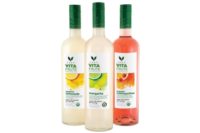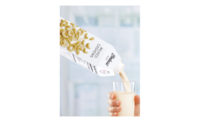At any time of day, a quick scan of a train or bus would likely reveal at least one or two people on their mobile devices — particularly smartphones. Around the world, more consumers are turning to smartphones for their mobile needs. According to New York-based eMarketer, 1.76 billion people will own and use a smartphone by the end of 2014. This is roughly a 25 percent increase from 2013, the market research firm reports.
As the proliferation of smart-phones continues, so has the spread of apps, which some market research firms suggest could offer new opportunities for marketers to connect with consumers.
In New York-based Nielsen’s report “Smartphones: So Many Apps, So Much Time,” it notes that U.S. Android and iPhone users aged 18 and older spend 65 percent more time each month using apps than they did two years ago. For example, in the fourth quarter of 2013, these consumers spent approximately 30.25 hours using apps compared with 18.3 hours in the fourth quarter of 2011, Nielsen reported. The data was collected through Nielsen’s Mobile NetView 3.0 software, which was installed with permission on panelists’ smartphones. Approx-imately 5,000 participants aged 18 and older with Android and iPhone smartphones participated.
Although consumers are spending more time on their mobile devices, the number of apps they interact with has remained relatively stable. The average number of apps used each month in the fourth quarter of 2013 was 26.8, compared with 26.5 and 23.2 during those same time periods in 2012 and 2011, respectively, Nielsen noted.
The market research firm also found that mobile app users are directing their attention to social networking and search portal solutions. The average time spent each month accessing these apps was 11 hours in the fourth quarter of 2013, Nielsen reported. Entertainment, which includes video, audio and gaming apps, was a close second with approximately 10.5 hours. This group showed a 71 percent increase compared with the same time period in 2012.
“As mobile consumption habits evolve, it’s imperative that app developers continue to add functionality and robustness to their offerings,” said Monica Bannan, vice president of product leadership at Nielsen, in a statement. “Although there does appear to be a limit to the number of apps people are willing to access on a monthly basis, they’re spending 31 percent more time than they were last year, proving that it’s the content that counts.”
Making your apps count
Given the proliferation of apps, brand owners within the beverage industry will likely want to be involved with this growing market; however, cracking a consumer’s Top 26 might be harder than it sounds, experts note.
Michael Fernandez, founder of New York-based Factory 360, says that the return on investment for developing an app can be challenging if centered on a brand. He adds that apps need to offer some sort of functional benefit or reward in order for a consumer to want to engage with them. To best utilize this practice, he suggests beverage brands forge partnerships with existing apps like Spotify or Facebook.
“I think brand owners in the beverage industry, if they are partnering with an existing app, I think that is a great way to collect some type of data on their consumers,” Fernandez says.
Although Fernandez foresees beverage brands finding opportunities within the app market, he notes that the usage might differ. “I think that beverages are going to continue to integrate [mobile apps] as a critical part of their marketing mix, but I think that they’re going to become smarter about it,” he says. “I think that they’re going to be more discerning in how they use them, and they’re going to be using them in shorter bursts and [for a] shorter duration and for promotional purposes as opposed to an app that lives for a permanent or semi-permanent amount of time.”
Commerce opportunities
According to Nielsen data, commerce and shopping is the No. 4 most-utilized category for mobile apps. In the fourth quarter of 2013, consumers used the apps for 1.5 hours a month on average, Nielsen reports. Although this is significantly less than the No. 1 and No. 2 categories, these types of apps still experienced a 12 percent increase compared with the same time period in 2012.
Noting the competitive app world, Bryan Leach, chief executive officer of Ibotta Inc., Denver, explains that third-party mobile apps can support this growing commerce segment as well as increase brand exposure. “When selecting third-party platforms, brands should [show] bias toward apps with a pay-per-sale or [cost-per-action] pricing model in favor of paying for impressions, clicks or engagement,” he says. “Marketers should also select apps that build real equity in the brands versus the myriad of transactional couponing apps.”
Ibotta’s free mobile app partners with retailers and brands to offer consumer engagement coupled with online rebate savings for the user. “Ibotta focused intently on the principles of brand engagement combined with a 100 percent pay-per-sale model when building its app, which has led to participation from all of the Top 10 largest consumer packaged goods manufacturers, including The Coca-Cola Co., PepsiCo, Constellation Brands, and many other category leaders in the beverage industry,” Leach adds.
In June, Ibotta launched a beer, wine and spirits category within its app with companies such as Constellation Brands, Mike’s Hard Lemonade and Veev.
“Ibotta is collaborating with many of its beverage clients to pioneer next-generation technologies and promotions to increase consumer engagement and consumption,” he says. “Among these next-generation technologies are social sharing, iBeacon technologies, and team-based earnings goals. For social sharing, Ibotta allows consumers to share and ‘like’ their favorite offers, therein facilitating an authentic signal to their friends who may be interested in a similar deal. These shares and likes are fed through the users’ Facebook feeds for friends with whom they are connected and help to cut through the clutter of less authentic paid social media advertising.
“IBeacons are allowing mobile apps to get closer to the consumer during [his or] her path to purchase by delivering aisle-specific messaging [that reminds] the consumer to take advantage of a particular new beverage flavor and offer,” he continues. “Finally, Ibotta was the first to release a team-based offer program, allowing consumers to join forces with their friends to buy similar products and work toward a team-based rebate or earnings goal.”





